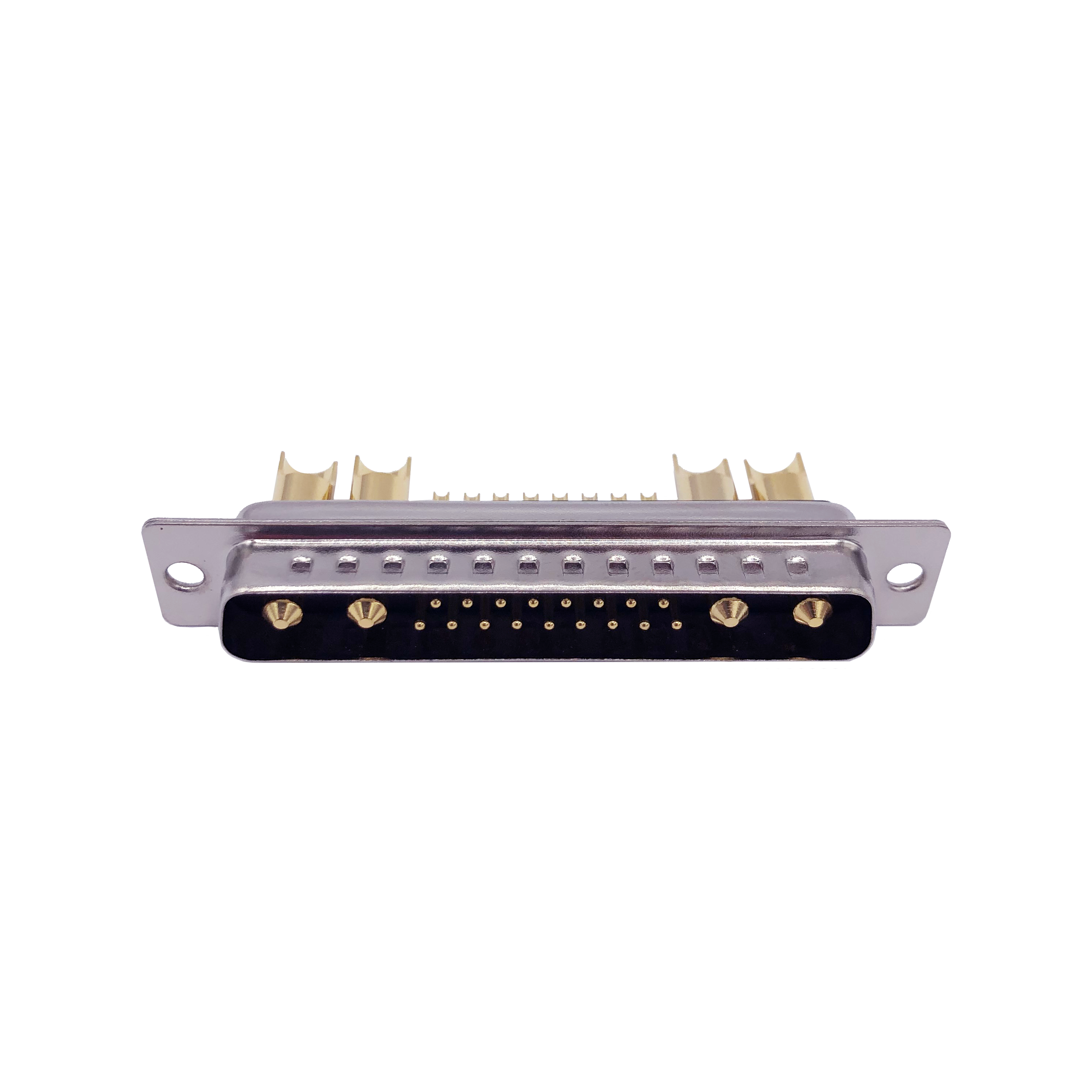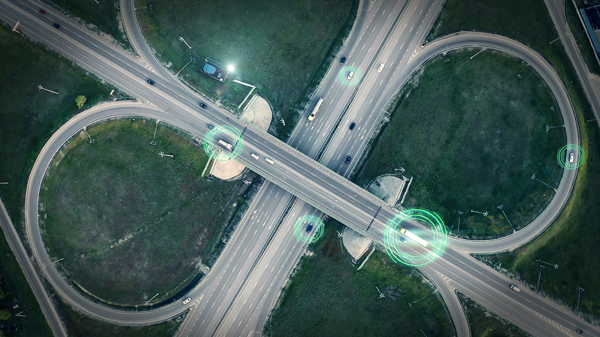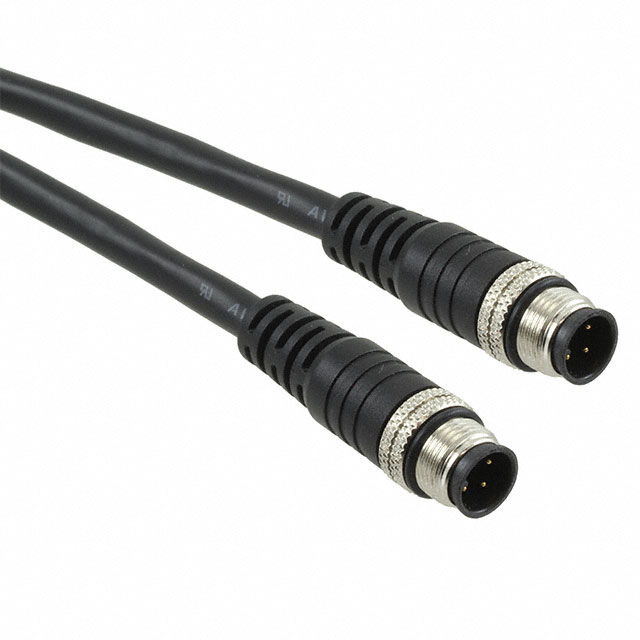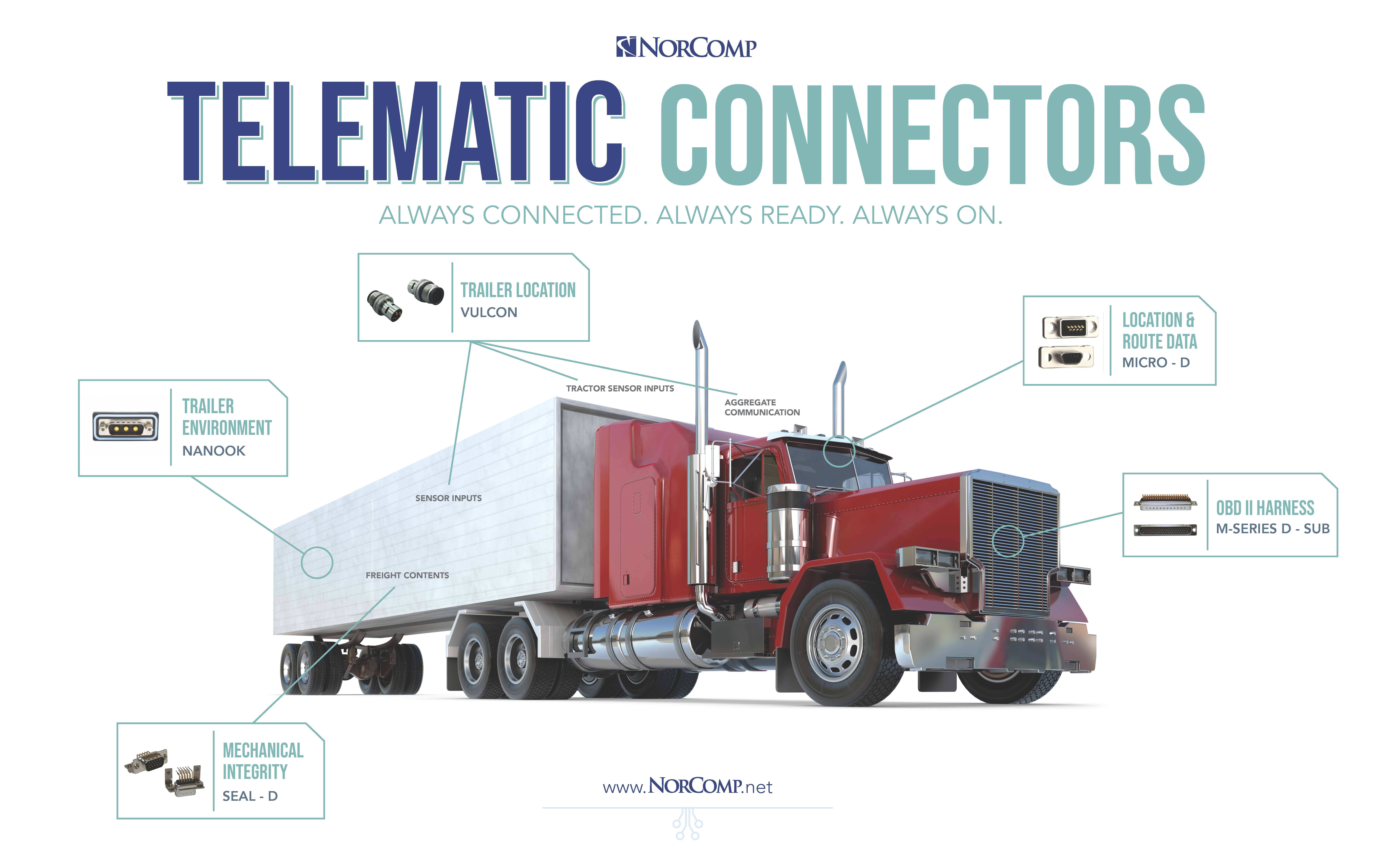Products
- Circular Connectors & Cable Assemblies
- D-Sub Connectors
- IP67 D-Sub Connectors
- D-Sub Backshells
- Micro-D Connectors & Cable Assemblies
- Power-D & Combo Mixed Connectors
- Push Pull Connectors
- D-Sub & Micro D Hardware
- Modular RJ45 Connectors
- USB Connectors
- D-Sub Adapters & Gender Changers
- SCSI .085"/.050"
- .050 Ribbon
- Headers & Receptacles
- Bayonet Connectors
Implementing Incident Reporting in Telematics
Implementing Incident Reporting in Telematics
Telematics technology initially allowed companies to gather basic information about their fleets while they performed the recurring tasks of delivery, fueling, and maintenance. More recently, companies are looking to collect additional data attributes to form a reliable picture of events that lie outside of the routine.
In the event of a vehicle damage from theft, vandalism, or collision, companies have found that telematics can help understand and document what went wrong. Advanced systems can even be used to prevent accidents before they occur.
This post explores the data and hardware used to expand telematics to go beyond everyday tasks and include incident reporting.
Automatic Crash Notifications (ACN)
Most telematic systems can already transmit data to fleet managers and dispatchers in real-time. The same capability can be extended to receive instant alerts in the event of an incident.
An Automatic Crash Notification (ACN) feature automatically sends an alert to the fleet manager as well as emergency services in the event of a significant impact, often speeding up response times. This feature is akin to the popular OnStarTM system in passenger cars.
The technology employs Onboard Event Data Recorders (EDRs), the “black boxes” that record data related to vehicle dynamics and telemetry before and after a crash.
The connectors used to integrate sensors, EDR, and onboard computers should be designed to be robust and reliable to ensure accurate and uninterrupted data transmission. Here are some connector recommendations in the context of data transmission:

Power-D Connectors: For a ruggedized D-sub connector assembly that handles high speed data as well as power, NorComp offers the Power-D line, which aggregates multiple data streams and 20 or 40 amps into a single connector. With patented internal Seal-D® technology, Power-Ds come IP67 rated.

Micro-D Connectors: These durable mini D-Sub connectors are one-third the standard size. COTS equivalent to M24308 D-sub connectors for military applications, NorComp's commercial off-the-shelf Micro-Ds are used for telematics, transportation, and rugged outdoor sensors —wherever robust and secure connections are needed.
These connectors are engineered to meet automotive industry standards and lab-certified to withstand vibrations, temperature variations, and other environmental stresses typical in automotive settings.
In the past, the actual retrieval and interpretation of EDR data has often required specialized tools and software and were performed well after the event. This practice is changing, especially in transportation fleets equipped with telematic platforms that communicate to remote locations.
For instance, some of the EDR data can be delivered the instant after a collision. Emergency dispatchers can use this information to predict the severity of the accident based on the change in velocity of the vehicle. Combined with GPS coordinates, this distress call can reduce response time and get the right equipment to the scene.

Radar & Lidar Data Collection
As the transportation industry implements more features of autonomous driving (AD), event reconstruction gains a useful set of metrics that describe the physics of a crash, including positions and velocities. Many trucks are now equipped with “machine vision” made possible through radar and LiDAR sensors.
Transmitting, retaining, and retrieving this information for future accident analysis, however, is an altogether different engineering problem, made more difficult because it involves large volume of data. Cloud-based telematics solutions, however, are now offering the capability and scalability to allow fleets of any size to retain AVS data.
Implementing monitoring also requires heavy-duty waterproof components that can connect outdoor cameras to telematic hubs. NorComp has connectors that can handle rough conditions and deliver high rates of signal reliably.

Weatherproof Data Connections: For external installations, weatherproof connectors are a necessity. Designed to resist moisture, dust, and temperature fluctuations, VULCONTM connectors in M5, M8, M12, and M16 circular formats provide flexible conductor counts that can support data transfer up to 10 Gbps. The over-molded cable assembly option provides additional seal and stability. NorComp also offers custom cable lengths to match specific applications.

Past Reconstruction & Future Prediction
GPS, EDR, radar, and LiDAR data together enables the transportation sector to reconstruct road accidents and crimes against company property. The investment in additional sensors for incident reporting may pay off in insurance claims, the tracking of stolen goods, and determination of driver culpability.
As telematic platforms grow in capabilities and sophistication, it will be better able to prevent accidents as well. A glimpse of this is already seen in Advanced Driver Assistance Systems (ADAS) that include lane departure warnings, blind-spot detection, and collision avoidance systems which can prevent incidents or reduce their severity.
Driving behavior monitoring — like the vehicle dynamic data collection in EDRs — can provide feedback to drivers in dashboard interfaces to deter them from risky maneuvers, hard braking, or speeding turns. And future predictive analytics will anticipate potential vehicle failures and suggest optimal maintenance schedules, reducing the likelihood of incidents related to mechanical failure.
As always, NorComp can provide reliable ways to integrate sensors with onboard diagnostics, telematic communication, and other vehicle electronics. For more guidance on selecting parts for your project see our telematics brochure or contact one of our NorComp technical experts.
Go Back





